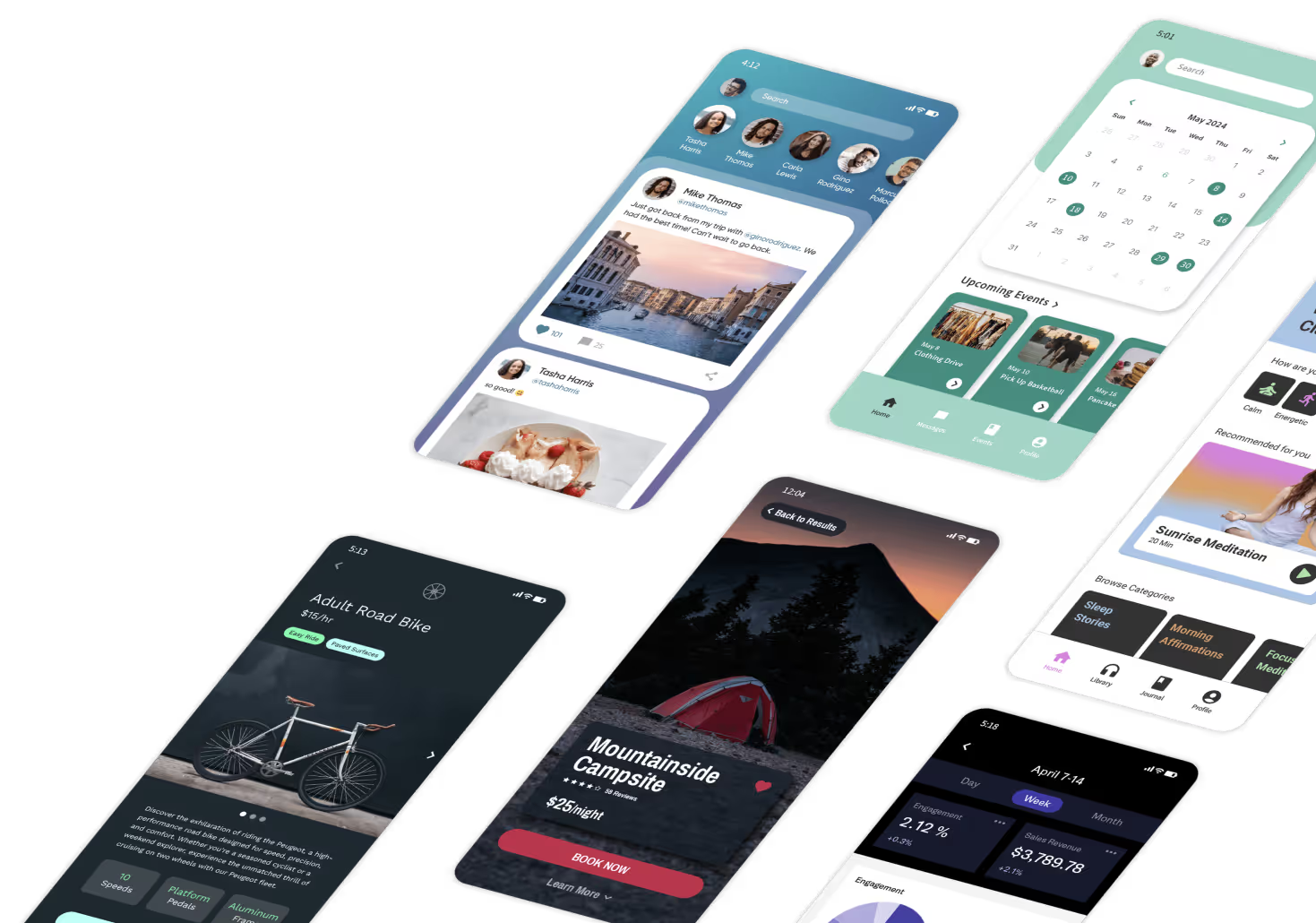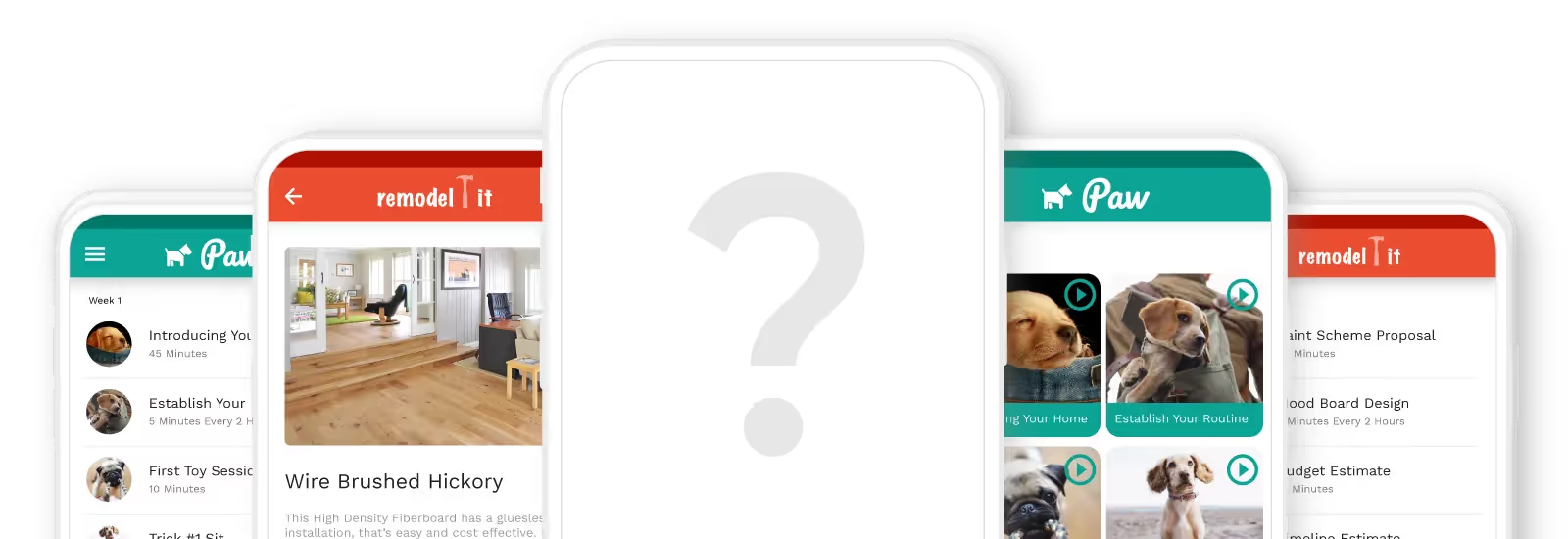
Microsoft Power Apps pricing starts from as little as $5/month per user and goes higher than $20/month per user. It also includes several add-ons that can affect the final price.
Read on to learn more about:
- A brief overview of the Power Apps platform
- Each Power Apps pricing tier
- Extra costs and add-ons
- Determining if Power Apps is right for you
- Adalo, a simple and affordable Power Apps alternative
Let’s look at the Power Apps platform in a little more detail.
What Is Power Apps?
.avif)
Power Apps, made by Microsoft, is a low-code app builder. It’s a traditional development platform, not a no-code tool, so you’ll need some tech skills to use it, such as knowing the logic behind coding and how SQL works. It’s primarily used to make internal business apps like portals, automation tools, etc.
Because it’s built for Microsoft, it integrates seamlessly with nearly any Microsoft program. You can incorporate data from Azure, Dataverse, or Excel and use your app in tandem with other Microsoft programs.
Power Apps Pricing: How Much Does It Cost?
Free Plan
This plan lets you experiment with the Power Apps platform, which is payment-free. You’ll be able to build custom apps, experiment with automation flows, and explore the platform's capabilities before handing over your credit card details.
You’ll be able to leverage several features, like prebuilt, custom, and on-premises connectors, to integrate various data sources and third-party platforms into your app, giving you a taste of Power Apps’ potential. It also provides up to 2GB of Dataverse storage and can automate up to 750 monthly workflows.
Ultimately, the Free Plan is geared towards prototyping. This means you’ll be able to create a “light” version of your app, but then beef it up with more features using a paid plan.
Power Apps Per App Plan ($5/app)
Only need to develop a few different apps for specific use cases? Power Apps’ pay-per-app plan might be the pricing tier for your needs. Instead of paying a fixed monthly per-user fee, this tier is economical for smaller companies with targeted needs, where developing heaps of apps is unnecessary.
For a very reasonable price of $5, one team member can create one custom app or website. You’ll get Dataverse space of 50 and 400 MB for file storage and access to integrations with third-party apps and other Microsoft tools.
Power Apps Premium Plan (Starting at $20/month Per User)
This plan is designed for organizations with a voracious need for creating apps: Each user can build an unlimited number of apps. If your business is rapidly growing or you’re a mid-sized organization or above, the Premium Plan has enough features to cover many of your operational needs, support scalability, and much more.
You’ll get access to premium features such as custom connectors to integrate with third-party apps, 250 MB of database storage, and 2 GB of file storage. 500 monthly AI Builder service credits are also included. This lets you bring powerful AI features like text analysis, prediction modeling, and document processing to your app, allowing it to execute tasks seamlessly.
Pricing for this tier starts at $20/month per user. Yet, if you’re a large organization or an enterprise with 2,000 or more folks using Power Apps, you’ll pay $12/month per user.
Pay-As-You-Go Plan
Already have an Azure subscription and want a pricing model based on your Power Apps usage? The Pay-As-You-Go Plan might be your best bet — you’ll only be charged for charged only for unique, active users who open a specific app at least once within a month.
Regarding features, you’ll get 1 GB of Dataverse storage and 1 GB of file storage.
This plan is excellent if your app usage patterns are variable or unpredictable.
Charges are based on actual app usage, making it flexible for apps with irregular usage patterns. For instance, the Pay-As-You-Go Plan is ideal if you need a few billing or payroll portals that you and your team only access a few times a month.
As mentioned, you’ll need an Azure subscription, as this plan’s costs will be tacked onto your Azure account.
Additional Costs and Add-Ons
The above Power Apps pricing tiers are just the tip of the monthly cost iceberg. If you want to execute more tasks or need a few add-ons to add even more AI-flavored juice to your apps, consider the following costs:
- Power Automate licensing: If you want to automate workflows between apps, you may need a separate Power Automate license. These can execute an array of tasks, from automating simple desktop workflows to analyzing vast data tracts to identify opportunities for bolstering productivity. The licenses vary in cost, starting as low as $15 per user/month.
- AI Builder licensing: Is the 500 monthly AI Service Credits not enough? Get an additional 1 million service credits for an extra $500/month and automate more processes, analyze more extensive data tracts, and create your own unique features and functionalities.
- Dataverse capacity and file add-ons: Every 1GB of Dataverse space costs an additional $40/month, and additional storage for images, documents, and videos costs $2/month per GB. You’ll pay $10/month per GB if you need more log capacity, which records changes made to your app, such as updates or debugging efforts.
- Power Pages authenticated users: If your app requires logged-in users (who didn’t take part in building the app but use it to execute tasks for their work), you’ll need to pay $200/month, allowing up to 100 users.
- Microsoft Copilot Studio: Need AI assistance navigating the entire Microsoft ecosystem? Microsoft Copilot will see you through, answering questions about using certain features, pulling up specific information, and more. This add-on costs $200/month for 25,000 messages (pieces of Copilot’s advice), or $0.01 per message if your usage is limited.
Is Power Apps Worth It?
Power Apps has pricing plans for nearly any business, from startups to mammoth-sized Fortune 500. If you’re already heavily invested in Microsoft and use tools like Office 365, Azure, Dataverse, and others, Power Apps is a no-brainer, as it will complement your operations nicely.
Companies that can get the most out of Power Apps are enterprises, large businesses, or medium-sized organizations looking to scale. That’s because the platform has tiers that let you build as many apps as you wish, which can cover the needs of organizations with evolving challenges.
Who Should Consider Other Options?
While Power Apps is a great choice for some organizations, others might want to seek an alternative. Here are a few organizations that might be better served by picking another app builder:
- Small businesses with limited budgets: If you’re a smaller business, Power Apps costs could add up substantially, especially if you have several users and opt for purchasing loads of add-ons.
Even if you go with the cheapest option at $5/month per app, you’ll still most likely need to pay licensing fees at the very least, which could cost $100s monthly.
- Businesses not using Microsoft: This one goes without saying, but Power Apps is essentially made for the Microsoft ecosystem, only. While the platform integrates with many non-Microsoft programs, not accessing Azure, Office 365, and others might substantially detract from Power Apps’ appeal.
- You don’t have technical skills: As we mentioned earlier, you’ll need to know some technical concepts about backends, databases, and the logic behind code to use Power Apps. If you’re a complete beginner, you’ll probably struggle.
- You don’t need an internal business tool: Power Apps is made to create internal business apps like client portals, project management software, and other business software.
While this covers the bases of many businesses, it doesn’t quite cut it if you need to build an app for your gym, a booking app for your salon or HVAC service, a takeout app for your cafe and restaurant, and others.
'{{rich-cta}}'
Adalo: The Best Power Apps Alternative
.avif)
Need an app-building platform that’s flexible enough to build business tools and client-facing apps but doesn’t require technical skills or coding knowledge? Check out Adalo.
Adalo is a no-code native mobile app builder that’s easy enough to use right after signing up but packs the power to bring any app idea to life. You’ll be able to customize your app’s colors, layout, and structure to your precise needs and tastes.
Unlike Power Apps, you’ll also be able to publish your own app to the Apple App Store, Google Play Store, and the web so your app can get maximum traction. Adalo also has simple, easy-to-understand pricing and is compatible with several platforms, like Microsoft, iOS, and Google. Try out Adalo’s free version and build your first app today!














